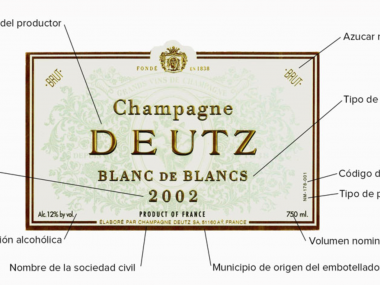The rosé wine is presented as one of the most exquisite and distinguished in the world, with a lot of structure but at the same time it is very simple to drink.
Another of its great qualities is that it is a wine that can be for the palates of the youth, it is perfect for any moment, it is always in fashion and it is more pleasant to drink!
Rosé wines are suitable for the production of the fundamental varieties: Grenache and Tempranillo.
Rosés can be made from any variety of grapes, such as syrah, cariñena, pinot noir, cabernet sauvignon, merlot or cinsault. Rosés are a great food boost and their production is extraordinary!
What does it owe its name to?
It owes its name to the manufacturing process known as must bleeding, with which it achieves better quality. The must enters and is dyed with the skins of the red grapes during fermentation.
To obtain a bottle of rosé wine, 2 to 3 kilos of grapes are needed. In addition, rosé wine gets the best out of the grapes, and its preparation is more complex than other types of wine.
After pressing, the wine is bled, thus obtaining a clear colour (due to the minimum contact with the lees and solid matter).
Why does it set the trend?
In 2006, people were taking it as a trend and celebrities started drinking dry rosé in the summer and it was a success! Later, it took off covering Miami, Los Angeles, among other major regions.
It is quite popular among the French population as they drink more rosé wine than white. In 2015, the Gauls drank approximately 176,000,000 gallons of rosé wine, and over the years the figure continued to rise.
Types of Rosé Wines
In relation to the types of rosé wine, we can determine two groups.
The dry-cut rosé wine
It is the most common method developed in the world. Countries such as France and Spain are leaders in the production of rosé wine. It is typical to see a mixture of 2 or 3 different varieties of grapes for its production.
Rosé wine of sweet cut
Any rosé wine can be made in a sweeter way. That is why we must prevent all the sugar from being fermented into alcohol. However, this is not a very common production. Wines made from Grenache or Merlot are the main ones that are adapted to this type of production.
Rosé wine represents 50% of the production of cigales, 46% is red and 4% white. In addition, some sweet and some sparkling wines must be added.
Rosé is cheerful, simple, fruity and economical, and can also be drunk on the beach. It is also convenient to serve it between 7 and 8 degrees. These wines are suitable for any time of the year and combine with a great variety of dishes.
It is essentially thought for young people and women because of its fruity touch, it can include very interesting varieties.






